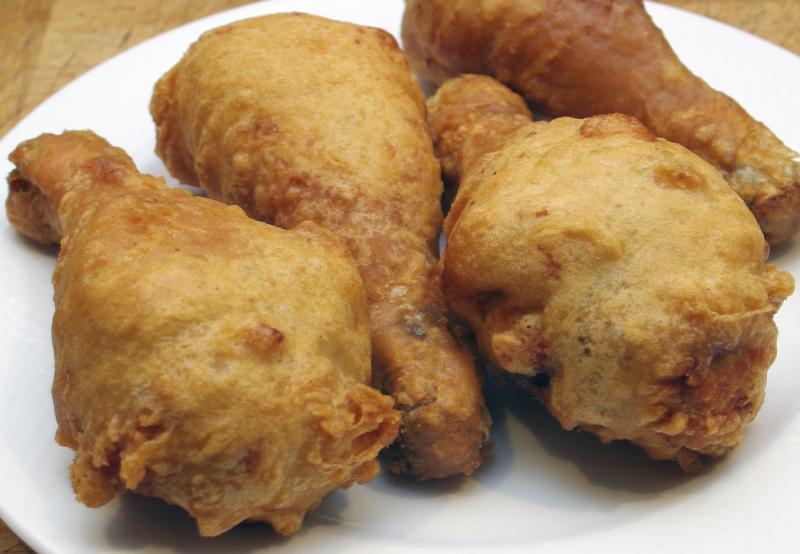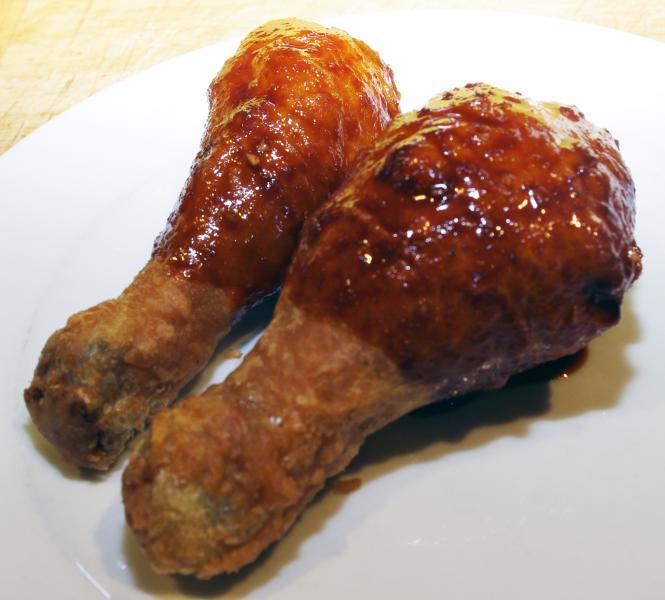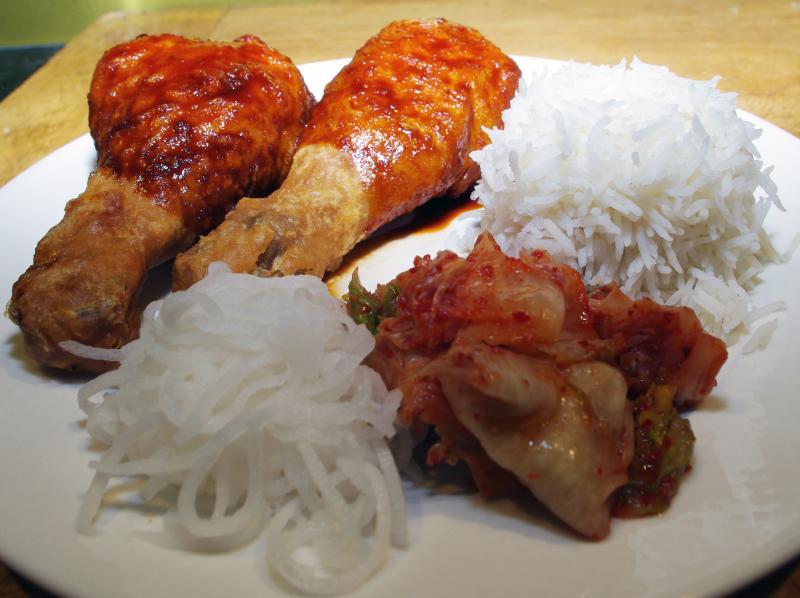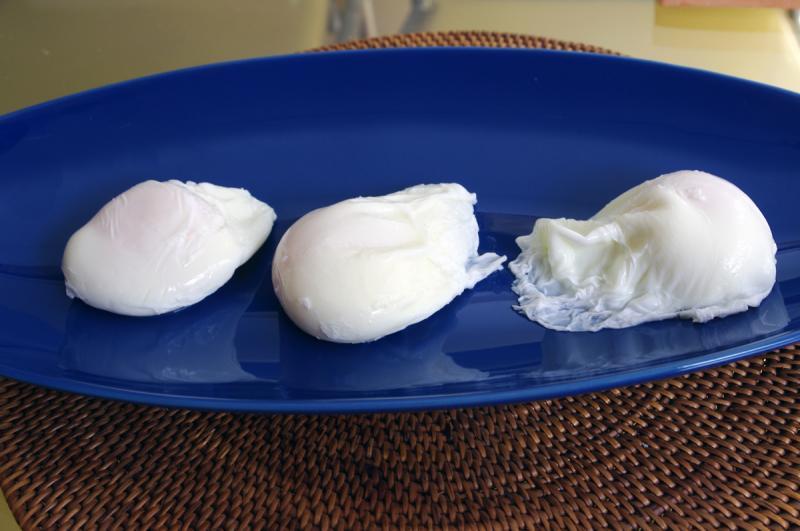-
Posts
2,606 -
Joined
-
Last visited
Content Type
Profiles
Forums
Store
Help Articles
Everything posted by nickrey
-
Beware one possible side effect of this: blocked drains.
-
Now there's a minefield.
-
How thick was the piece? I agree with Chris, it should have been fine. Must have been the meat rather than the cooking process. Was it one of those "moisture infused" chunks of pork?
-

Transglutaminase source, anyone?
nickrey replied to a topic in Australia & New Zealand: Cooking & Baking
Just an update on this. Melbourne Food Depot now has 50g sample packs of transglutaminase for A$28 plus shipping. Web page is here. -
The only additional things I'd put into the chili 'sans' carne would be cocoa powder and liquid smoke. Also you could add some pickled jalapeño.
-
Oops. Just realised I posted the same suggestion four months apart. At least I'm nothing if not consistent. (see above but add texture as well as flavour).
-
I'll lick most things off a spoon so as not to waste the goodness. Perhaps it might be better to ask what people don't lick off the spoon.
-
When I cooked swordfish, it was a thinner cut and I took it to around 53C. It worked really well. Perhaps we should say that the thinner cuts (up to 3cm/1 inch) are best for doing sous vide as the cooking times for thicker cuts may be too long.
-
I don't cook at those temperatures so my understanding is not based on detailed reading of the literature. As I said above, I'm looking for guidance not a debate. Looking back over the thread, NathanM said in this thread that he wouldn't cook fish at a low temperature for more than a few hours. Just wondering what if anything has changed.
-
All those alternatives! All those seem to have appeared since I first embarked on my curing salt quest. I know I checked MFCD and they told me it wouldn't be available for around 12 months. Many thanks for the update. Just be careful on quantities if you are using pure sodium nitrite in curing. A little goes a very long way and it is poisonous if used incorrectly. Most of the recipes that are commonly available using curing salts, which contain lots of salt in addition to the active ingredient.
-
No comments about cooking a piece of fish for over 2 hours at 50C or less? It's not something I'd do: Am I reading the literature wrongly? I am looking for guidance on this one.
-
I've cooked swordfish Chris and it comes out perfectly. It is so easy to overcook normally. Sous vide cooking gives the perfect amount of heat control to bring out the best of what I consider to be the steak of the sea. Edited to add: For temperature I'd do 53 - 55 C (127.4 - 131F). Timing will depend on thickness. 2 inch fillet like Scotty Boy used could probably take around two hours to reach a correct core temperature. Sear very briefly before serving.
-
I'd agree with many that onions cooking is probably my all time favourite. Garlic and bacon are way up there too in my favourite cooking smells. I'm surprised that the smell of freshly baked cookies is not mentioned more frequently. When there is a cookie bakery in a shopping mall, you can home in on it by following your nose (and the others who are doing the same).
-
If by gummy you mean a mouth feel like the dish is redolent with fat, that's risotto. Your dish sounds more like a pilaf: Still a nice dish but poles apart in history, intention, and outcome.
-
Sounds like what happens when potatoes oxidise. You could try adding some acid to the bag which should give a similar effect to putting it in acidulated water.
-
I'd second a number of books mentioned, especially Marcella Hazan's Classic Italian Cooking. One book I always go to that was first published in 1968 is Claudia Roden's "A Book of Middle Eastern Food." I'd put it in the same class as the Hazan book.
-
-
Rather than just talk about the dish as I did above, it's time for some photos. Here is the fried chicken. Sauced with the Korean BBQ Sauce. On the plate with rice, pickled Daikon, and store-bought Kimchi
-
(the trimming was done after the picture was taken).
-
As said above, I swirl the water and use a deep pan (around 8-10 inches of water). Made some this morning and chilled after cooking so I thought I'd include a picture. These were cooked two at a time in swirling water (you can cook up to four using this method and still get the same results; any more and the timing tends to be more difficult). They have not been trimmed for presentation, this is just how they always turn out. I did trim down the frilly edges on the one on the right to make it more presentable
-
If it was chewy because of fat and connective tissue, it needed longer cooking. You can tell this by mouth feel. If it was just leathery, it was the wrong cut and no amount of extra cooking is going to make the meat tender.
-
How about the Japanese hibachi grill, paella pan, Mediterranean clay pots (romertopf, etc)?
-

EatYourBooks.com: search your own cookbooks for recipes online
nickrey replied to a topic in Cookbooks & References
My equivalent to that is 60 out of 270 (or 22%). At 50% you seem way ahead. My total also does not include many books whose ISBN were not recognised. According to the website, they have indexed 1344 books so far. If you think about the amount of work indexing one book alone, this is going to be a long-term project. All that aside, I now have access to 14,417 indexed recipes in a form that makes them so much more accessible. The site is still in beta with modifications to software and further indexing to occur prior to it coming off beta. Like Nakji, I'm taking a very long term view of this site which is already giving me a lot of return. -
I do swirl the water. Use very fresh eggs. Harold McGee also suggested the process outlined by Jaz: cracking the eggs into a sieve and letting the loose albumin flow away before cooking. The trick I've found is to use a deep pan (around 10 inches deep). Bring the water to a low simmmer with some vinegar in the water. If you add salt at this time, the eggs tend to pit. Crack an egg into a small container (I use a small ramekin). Swirl the water with a balloon whisk (I swirl it quite vigorously and let it settle down before adding the egg, which tends to even out any random eddys that may have formed in the water). Put the edge of the container right next to the centre of the swirling water and let the egg slide into the centre of the gently swirling water. If you drop it from any higher, is likely to break up. Crack the next egg into the container (by the time you do this, the first egg will have wrapped around itself). Slide the second egg into the centre of the still gently swirling water. It will wrap separately around itself. The eggs will float up the water in the pan as they cook. Use a strainer to bring the eggs out of the water and press gently next to the yolk to check doneness. Take the eggs out slightly before they reach the desired level of doneness as they will continue to cook when removed from the water. Drain the eggs on a tea towel or kitchen paper. Trim off any loose egg white if you want a restaurant type presentation. Salt and serve. As already said, if you are cooking large amounts of eggs, you can arrest the cooking process by putting them into iced water. Return them briefly to the simmering water to reheat before draining and serving. Edited to correct typo.







